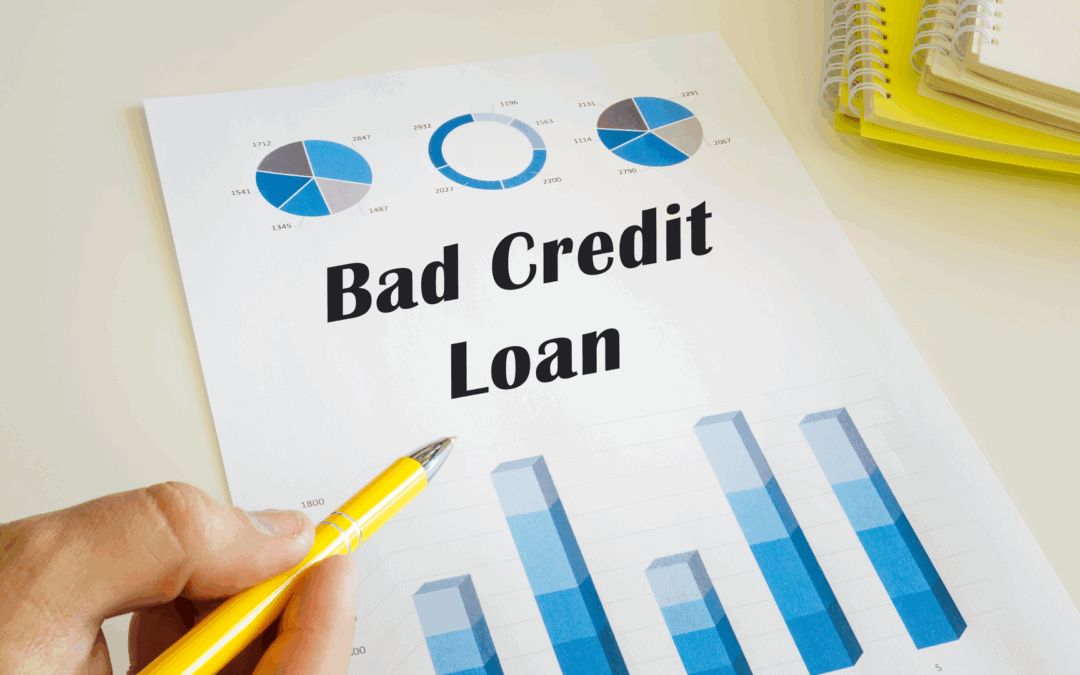How to Fix Bad Credit: The Unfiltered, Strategic Path to Take Control of Your Financial Future
Understanding how to fix bad credit is one of the most transformative steps you can take for your financial life. It’s not just about raising numbers—it’s about reclaiming access: to better jobs, housing, lower interest rates, and peace of mind. If you’ve ever felt embarrassed, trapped, or judged because of your credit score, you’re not alone—and the process to repair it is far more tactical than most people realize.
Why Credit Troubles Quietly Undermine Every Financial Decision You Make
When your credit score tanks, the impact is silent but severe. You get declined for car loans, denied for apartments, or forced into sky-high interest rates that only make things worse. It’s not just inconvenient—it becomes a loop of financial setbacks. And most advice out there is generic, outdated, or flat-out wrong.
This guide breaks through that noise with a clear, strategic approach built around action—not theory.
Start Here: Core Actions That Drive the Fastest Credit Recovery
Let’s begin with high-leverage steps. These form the foundation and deliver the fastest measurable results.
1. Request and Analyze All Three Credit Reports
You can’t improve what you don’t track. Start by pulling your credit reports from Equifax, TransUnion, and Experian at AnnualCreditReport.com—the only federally authorized source for free reports.
Scan for:
-
Duplicate accounts
-
Fraudulent activity
-
Incorrect late payments
-
Outdated negative items
-
Balances reported incorrectly
Action tip: Dispute any inaccuracies immediately with each bureau individually. Documentation is key—use bank statements, receipts, or settlement letters to support your case.
✅ Q: Can fixing one error really impact my score?
Yes. Removing just one collection or inaccurate late payment can lift your score by 20–50+ points, depending on your profile.
2. Target Utilization—The Credit Ratio That Moves the Needle
Credit utilization—the ratio of your balances to credit limits—makes up nearly 30% of your score. The sweet spot? Below 10% of your total limit.
How to do it fast:
-
Ask current credit card issuers for a limit increase
-
Spread your debt across multiple cards
-
Pay down balances before the statement closing date, not the due date
What most miss: Even a single card maxed out can tank your score—even if others are paid off. Balance distribution matters.
3. Set Up “Credit Builders” to Add Positive History
If you have few open accounts, or mostly negative history, you need to build fresh, positive data.
Three ways to do this:
-
Secured credit card: Backed by a deposit, easy to get approved
-
Credit builder loan: A small loan you repay monthly, often through credit unions
-
Rent reporting services: Add your on-time rent to your credit profile
These options report to all major bureaus and work silently in the background to build trust with future lenders.
Precision Moves to Clean Up Credit Without Creating More Risk
Once your base is stable, use these techniques to address the deeper marks dragging you down.
✔️ Negotiate Settlements That Favor Deletion
Unpaid debts? Don’t rush to pay. Use them as negotiation tools.
Strategy:
-
Offer 30–60% of the balance in exchange for a “pay-for-delete” agreement
-
Get confirmation in writing before you send money
-
Track the credit bureau to ensure the item is removed
Why this matters: Paid collections still hurt your score unless removed entirely.
✔️ Use “Goodwill Letters” to Remove Past Mistakes
If you’ve previously paid off a loan or credit card but had late payments, reach out to the lender with a goodwill letter.
How to write it:
-
Be polite and concise
-
Acknowledge the late payment and explain the temporary hardship
-
Emphasize your clean history since
Many companies are willing to remove the mark, especially if you’ve otherwise been a good customer.
✔️ Avoid New Hard Inquiries Unless Absolutely Necessary
Each hard inquiry can ding your score by 5–10 points, and too many look like desperation.
Best practice:
-
Space out applications by at least 90 days
-
Use prequalification tools that only require soft pulls
-
Apply only when your profile is ready to handle approval
Building a Sustainable Credit Profile: Long-Term Game Plans
Fixing bad credit is one thing. Keeping it fixed is another. Here’s how to make your gains last.
✳️ Automate Every Single Payment
Late payments cause the biggest score drops—and stay for 7 years. Set auto-pay on all bills, even if it’s just the minimum.
Bonus: Some lenders offer interest rate discounts for enrolling in autopay.
✳️ Monitor Your Progress—But Stay Calm
Use services like Credit Karma, Credit Sesame, or Experian’s free tools to track updates monthly.
Watch for:
-
Sudden drops (indicating possible errors or fraud)
-
Score increases after removing derogatory marks
-
Better offers on credit cards or loans
Reminder: Scores don’t rise evenly. Sometimes a 30-point jump comes from one smart move.
✳️ Diversify Your Credit Portfolio
When the time is right, round out your profile with different credit types. This mix is factored into scoring models.
Examples:
-
One revolving account (credit card)
-
One installment loan (auto, student, personal loan)
-
One retail or gas card for variety
Only take on what you can manage—this is about optics, not debt.
Common Questions About Fixing Bad Credit
How long does it take to fix bad credit?
Timelines vary. You can see meaningful change in 3–6 months with focused action. Full credit recovery may take 12–24 months depending on the depth of damage.
What’s the fastest way to improve my score?
Lowering credit utilization and removing inaccurate negative items usually yield the quickest results.
Should I pay off old debts or let them fall off?
Depends. If they’re close to aging off (7 years), sometimes it’s better to wait. But if you can negotiate a deletion, paying is worth it.
Final Thought: Take Control, Don’t Wait for Permission
No one is coming to fix your credit for you—but that’s the best news. You can turn it around, no matter how bad it looks now. And you don’t need to wait years or pay expensive “credit repair” services to start seeing progress.
Each move outlined above isn’t just a tip—it’s a trigger. A trigger that resets your financial momentum and repositions you for approvals, respect, and financial freedom.


